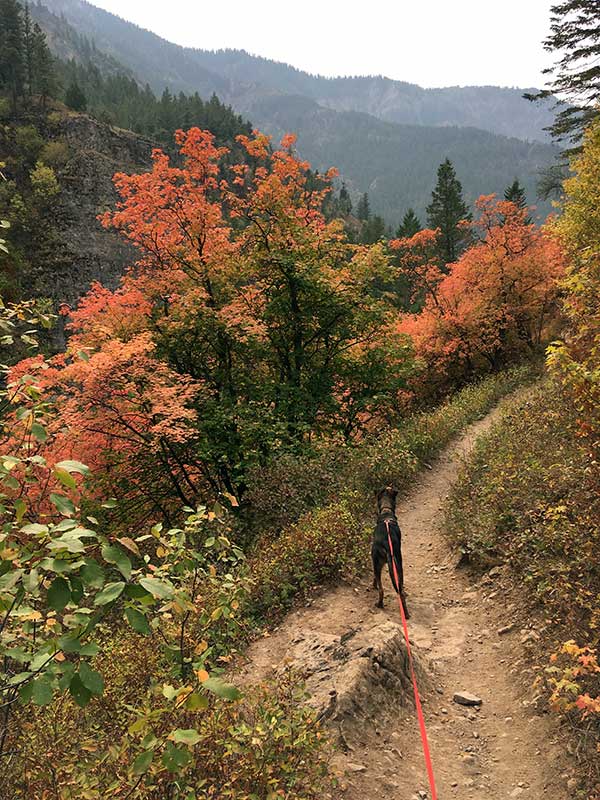Acer glabrum / Rocky Mountain maple
- understory shrub, small tree, multiple stems
- opposite leaves; red twigs
- maple-like leaves
- teeny flowers; double-helicopter fruits
Rocky Mountain maple commonly occurs as a understory shrub or small tree, usually multi-stemmed. It can grow as tall as 30 feet with a stem diameter of 12 inches, but good luck finding one that big. Mostly it is much shorter, e.g. less than 7 feet. Much of the time, it will be found along stream banks but it can grow in upland forests as well. A good place to see it in the Valley (loosely defined) is at Palisades. This is especially a fine place in the fall.
Like all maples, Rocky Mountain maple has opposite leaves. The bark is smooth until the tree gets big, after which it develops fissures. The roots spread out quite far, and occur as a combination of deep and shallow roots. After browsing or top death, the plant resprouts from those roots.
The twigs of Rocky Mountain maple are red, as are the bud scales. This makes for a fine show in the winter, especially. The lateral buds are appressed to the twigs.
The flowers are borne in loose, terminal cymes. They grow in drooping clusters and are present for a short time in the spring, e.g. early June. They are both wind and insect pollinated. The fruits are bi-winged samaras – helicopters – and can persist on the tree over winter. Once released, they can remain airborne for a long time, aiding in long distance dispersal. Typically, large seed crops are produced once every 1-3 years. The seeds don’t remain viable for very long in dry, frosty periods which is a bit of a conflict with the fact that germination requires ca. 6 month of chilling.
Rocky Mountain maple is an important browse species for a variety of large quadrupeds and grouse. If it is eaten down to the ground, the root sprout grows fast, getting out of reach of all but the largest, unless (of course) they get to it again, first.
| Color | |
|---|---|
| Family | |
| Blossom size | |
| Inflorescence size | |
| Inflorescence type | |
| When? | |
| Where? |




